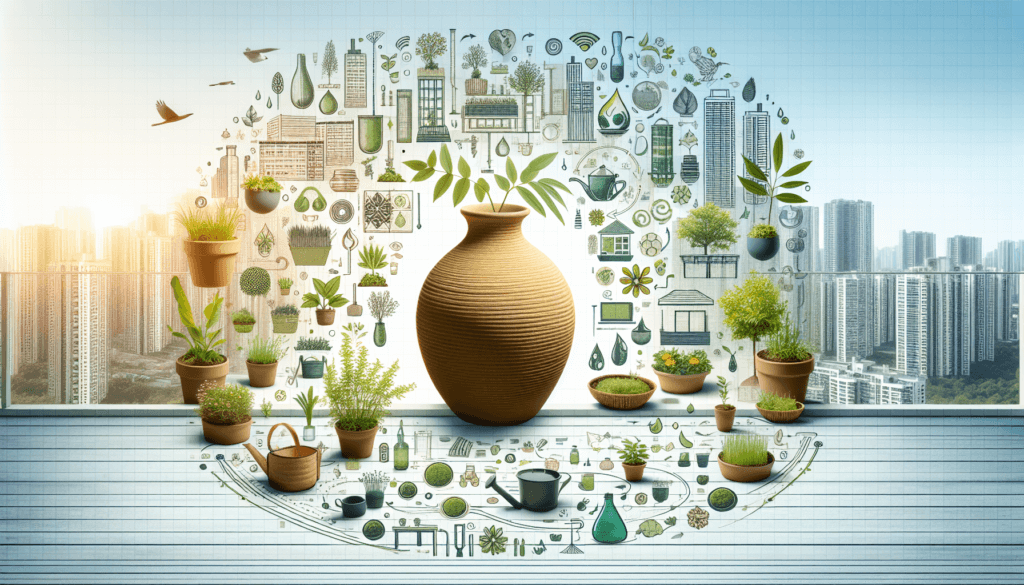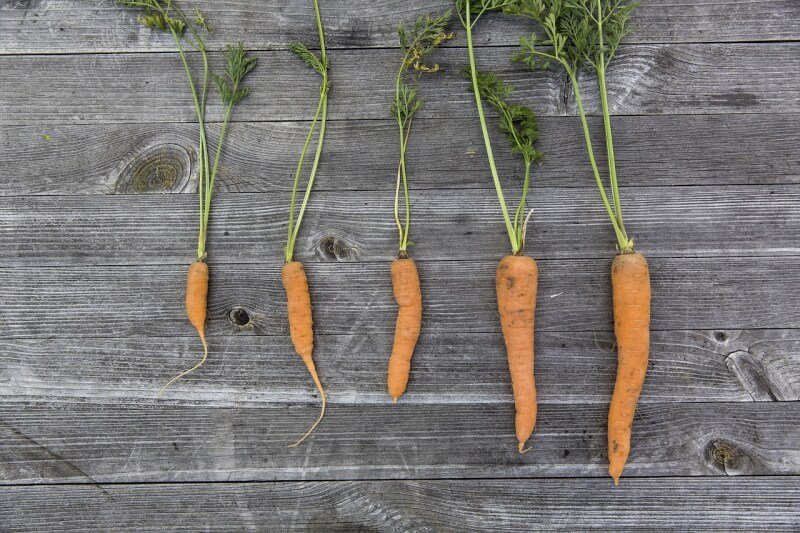Imagine transforming your tiny balcony into a green oasis, bursting with life and vibrant colors. With these urban gardening tips, you can turn your limited space into a sustainable balcony garden, perfect for growing your own herbs, vegetables, and flowers. Whether you’re a novice gardener or have a green thumb, these tips will help you create a thriving and eco-friendly urban garden that will bring joy and beauty to your everyday life. Say goodbye to the concrete jungle and hello to a peaceful sanctuary right outside your door.
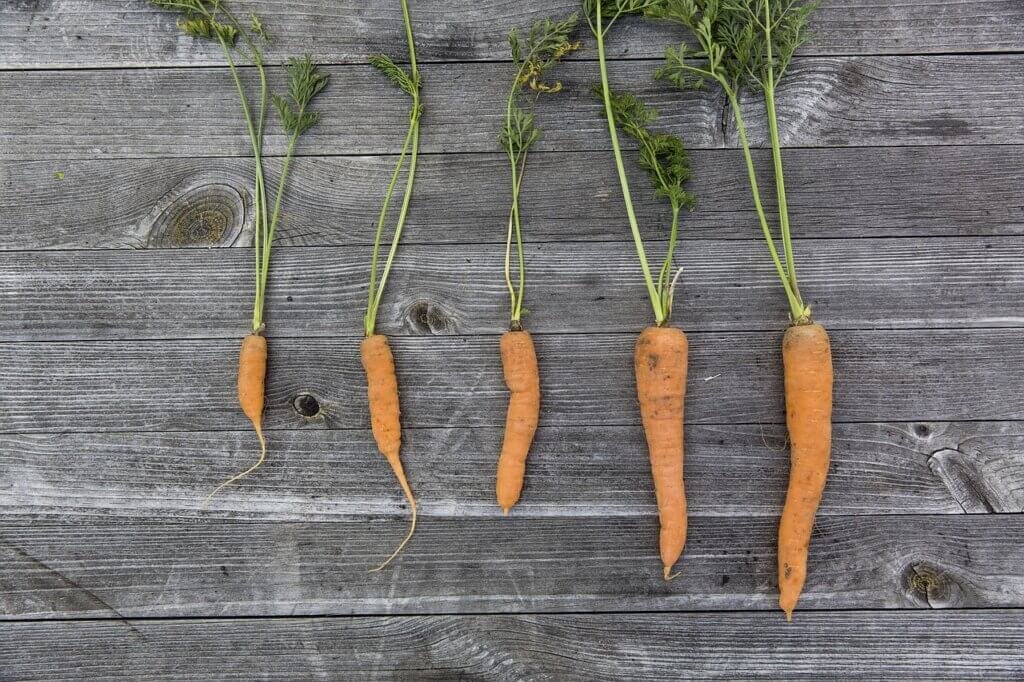
Choosing the Right Plants
Consider the climate and sunlight
When choosing plants for your balcony garden, it is essential to consider the climate and sunlight conditions of your area. Some plants thrive in full sun, while others prefer partial shade. Research the specific requirements of the plants you are interested in and ensure that they align with the conditions on your balcony. Consider factors such as the intensity and duration of sunlight throughout the day, as well as the temperature fluctuations that your balcony may experience.
Choose plants that thrive in containers
Since balcony gardens are usually limited in space, it is crucial to choose plants that can thrive in containers. Look for plants that have compact growth habits or varieties specifically bred to be container-friendly. Herbs like basil, mint, and chives are great options, as well as dwarf or patio varieties of vegetables like tomatoes and peppers. Many flowering plants, such as petunias and begonias, also perform well in containers.
Select plants that require minimal maintenance
To ensure a sustainable balcony garden, select plants that require minimal maintenance. Consider your gardening skills and the amount of time you can dedicate to caring for your plants. Some plants are more demanding in terms of pruning, fertilizing, and watering, while others are low maintenance and can thrive with minimal attention. Opting for low-maintenance plants will not only make gardening easier for you but also contribute to the long-term sustainability of your balcony garden.
Planning and Designing Your Balcony Garden
Measure the available space
Before diving into your balcony garden project, take some time to measure and assess the available space. Consider the dimensions of your balcony, as well as any restrictions or limitations that might affect your gardening endeavors. Take note of the areas that receive the most sunlight, as well as those that are more shaded. These measurements and observations will help you make informed decisions regarding plant selection and placement.
Consider the weight-bearing capacity
Balconies have weight-bearing limits, so it is crucial to consider this factor when planning and designing your balcony garden. Ensure that your balcony can support the weight of the containers, soil, plants, and any additional features you may want to incorporate, such as trellises or hanging baskets. Consult your building’s management or a structural engineer if you are unsure about the weight-bearing capacity of your balcony. Safety should always be a priority.
Design the layout for optimal use of space
When designing the layout of your balcony garden, aim for optimal use of space. Consider the size and growth habits of the plants you have chosen, as well as their sunlight and water requirements. Arrange the containers in a way that allows easy access to all plants and maximizes sunlight exposure for each. Creating different levels or tiers using shelves or plant stands can also help maximize space utilization.
Create a sketch or blueprint
Before implementing your balcony garden design, create a sketch or blueprint to visualize how everything will fit together. Note the placement of containers, hardscaping elements like shelves or trellises, and any other features you plan to include. This will help you better understand the flow and aesthetics of your balcony garden and ensure that it aligns with your vision.
Choose appropriate containers and vertical gardening systems
Selecting the right containers and vertical gardening systems is crucial for a successful balcony garden. Containers should have proper drainage holes at the bottom to prevent waterlogging, and the size should be suitable for the plants’ root systems. Consider the material of the containers, such as plastic, terra cotta, or fabric, and choose what works best for your specific needs. Additionally, explore vertical gardening options like trellises, hanging baskets, and wall-mounted planters to make the most of limited space.
Preparation and Maintenance
Prepare the balcony floor or walls
Before setting up your balcony garden, it is important to prepare the balcony floor or walls to ensure a conducive environment for plant growth. Clean the space thoroughly, removing any debris or dirt. If your balcony has a concrete floor, consider applying a weatherproof sealant to protect it from moisture damage. Balcony walls can be cleaned and painted, if desired, to enhance the overall aesthetics of your garden.
Ensure proper drainage
Proper drainage is essential for the health of your plants, as it prevents water from accumulating and causing root rot. Ensure that your containers have adequate drainage holes and that excess water can flow freely. As a precautionary measure, consider placing saucers under the containers to catch any excess water. You can also elevate the containers slightly using pot feet or by placing them on a layer of gravel to improve drainage.
Create a watering schedule
Establishing a watering schedule is crucial to ensure that your plants receive adequate moisture without being overwatered. Factors such as the type of plants, container size, and weather conditions will influence how often you need to water. Generally, it is better to water deeply and less frequently rather than applying small amounts of water frequently. Consider using tools like moisture meters or your finger to check the soil moisture level before watering.
Provide adequate sunlight
Sunlight is vital for plant growth, so it is important to provide adequate sunlight to your balcony garden. Observe your balcony throughout the day and take note of the areas that receive the most sunlight. Position your sun-loving plants accordingly, ensuring they receive at least 6-8 hours of direct sunlight each day. If your balcony is heavily shaded, focus on selecting plants that tolerate partial shade or consider using supplemental grow lights.
Use organic fertilizers
To maintain a sustainable and environmentally-friendly balcony garden, opt for organic fertilizers. Organic fertilizers are derived from natural sources and are better for the long-term health of your plants and the ecosystem. Look for options like compost, worm castings, or organic granular fertilizers that are specifically formulated for container gardening. Apply fertilizers according to the instructions provided and avoid overfertilization, as it can harm your plants.
Prune and trim regularly
Regular pruning and trimming of your plants is essential for their healthy growth and overall appearance. Remove any dead or diseased leaves, branches, or flowers to prevent the spread of diseases and pests. Pruning also helps promote new growth and keeps your plants in shape. Be sure to use clean, sharp pruning tools and follow specific pruning guidelines for each plant to avoid excessive or incorrect cutting.
Control pests naturally
Pest control in a balcony garden can be challenging, but it is important to adopt natural methods to maintain the balance of the ecosystem and protect beneficial insects. Regularly inspect your plants for signs of pests such as aphids, spider mites, or whiteflies. Introduce natural predators like ladybugs or lacewings, or use organic pest control products such as neem oil or insecticidal soaps. Also, practicing good hygiene and removing any plant debris can help reduce pest populations.
Container Selection and Placement
Select the right size and material for containers
Choosing the right size and material for your containers is crucial for the health of your plants. Consider the mature size of the plants and their root systems when selecting the container size. If the container is too small, it may restrict root growth and lead to stunted plants. As for the material, options like plastic, terracotta, or fabric containers all have their advantages and disadvantages. Plastic containers are lightweight and retain moisture well, while terra cotta containers are porous and allow for better airflow.
Consider the plants’ depth and root space
Different plants have varying root systems, so it is important to consider their depth and space requirements. Deep-rooted plants like tomatoes or peppers will require larger, deeper containers to accommodate their root growth. On the other hand, shallow-rooted herbs like basil or parsley can thrive in smaller, shallower containers. Research the specific plants you want to grow or consult with a local gardening expert to determine the appropriate container size for each plant.
Ensure proper drainage in containers
Proper drainage in containers is crucial to prevent waterlogging and root rot. The containers should have drainage holes at the bottom to allow excess water to escape. If the containers you choose do not come with drainage holes, consider drilling or punching holes yourself. Additionally, placing a layer of gravel or small rocks at the bottom of the container can further promote drainage and prevent the soil from becoming compacted.
Group plants with similar water and sunlight requirements
To simplify watering and care, consider grouping plants with similar water and sunlight requirements together. This makes it easier to ensure that all plants in the group receive appropriate care without over or under watering. This technique also allows you to create micro-environments within your balcony garden, providing different conditions for different plant groups based on their specific needs.
Utilize vertical space by using hanging baskets or wall-mounted containers
One of the best ways to maximize space in a balcony garden is by utilizing vertical space. Hanging baskets or wall-mounted containers are excellent options for growing plants vertically. You can hang pots or troughs on the balcony railing or install shelves or planters on the walls. Vertical gardening not only adds visual interest to your balcony but also increases your planting options and takes advantage of unused space.

Choosing the Right Soil Mix
Use a high-quality potting mix
A high-quality potting mix is essential for the success of your balcony garden. Potting mixes are specially formulated to provide the necessary nutrients and drainage for container plants. Look for potting mixes that are well-draining, lightweight, and enriched with organic matter. Avoid using garden soil alone, as it can become compacted and hinder root growth. Proper drainage is crucial, so ensure that the potting mix is loose and well-aerated.
Combine garden soil with compost and perlite/vermiculite
If you prefer making your own soil mix, consider combining garden soil with compost and perlite or vermiculite. Garden soil provides essential nutrients, while compost improves soil structure and fertility. Perlite or vermiculite helps enhance drainage and prevent soil compaction. Use equal parts of garden soil and compost, and add perlite or vermiculite in small amounts until the desired consistency is achieved. This DIY mix can be a cost-effective and sustainable option for your balcony garden.
Ensure good drainage by adding coarse sand
To promote good drainage in your soil mix, consider adding coarse sand. Sand helps prevent the potting mix from becoming too dense or compacted, allowing excess water to flow out of the container. Add coarse sand in small amounts to avoid creating a soil mix that is too heavy and prone to compaction. A well-draining soil mix ensures that your plants’ roots have ample oxygen and are not subjected to waterlogged conditions.
Consider using a soilless mix for specific plants
Certain plants, such as orchids or succulents, have specific soil requirements that may not be met with traditional potting mixes. In such cases, consider using a soilless mix specifically designed for those plants. Soilless mixes usually consist of components like peat moss, perlite, vermiculite, or coconut coir. These mixes provide excellent drainage and aeration while retaining moisture, creating an ideal growing medium for plants with specialized needs.
Use mulch to retain moisture and control temperature
Mulching is a beneficial technique for balcony gardens as it helps retain moisture in the soil, suppresses weed growth, and moderates soil temperatures. Apply a layer of mulch around your plants, leaving a gap around the base to prevent stem rot. Organic mulches like wood chips, straw, or compost are excellent choices, as they also break down over time and contribute to the overall fertility of the soil.
Watering Techniques for Balcony Gardens
Learn the watering requirements of each plant
Each plant in your balcony garden may have different watering requirements, so it is important to familiarize yourself with the specific needs of each plant. Some plants prefer consistently moist soil, while others prefer periods of dryness between watering. Research the watering preferences of your chosen plants to avoid overwatering or underwatering, both of which can be detrimental to the health of your plants.
Avoid overwatering or underwatering
Overwatering and underwatering are common mistakes made by beginner gardeners. Both can have negative impacts on plant health. Overwatering can lead to root rot and fungal diseases, while underwatering can cause wilting, stunted growth, and nutrient deficiencies. By understanding the watering requirements of your plants and monitoring the moisture levels in the soil, you can provide the right amount of water and prevent these issues.
Use self-watering containers or drip irrigation systems
If you have a busy schedule or frequent travel plans, consider using self-watering containers or drip irrigation systems. Self-watering containers have built-in reservoirs that provide a steady water supply to the plants. Drip irrigation systems allow for targeted and controlled watering, minimizing water waste. Both options can help maintain consistent moisture levels in your balcony garden, even during periods when you are unable to water regularly.
Water the plants early in the morning or late evening
To minimize water loss due to evaporation and ensure optimal water absorption, it is best to water your plants early in the morning or late in the evening. During these cooler times of the day, the water has a better chance to reach the plant roots effectively. Avoid watering during the hottest part of the day when the sun is intense, as much of the water may evaporate before being absorbed.
Check the soil moisture level regularly
Regularly checking the soil moisture level is essential to ensure that your plants are receiving adequate water. You can use a moisture meter, stick your finger into the soil, or observe the color and texture of the soil to determine if watering is necessary. Different plants have different moisture requirements, so monitoring the soil moisture level helps prevent both over and underwatering, promoting healthy plant growth.
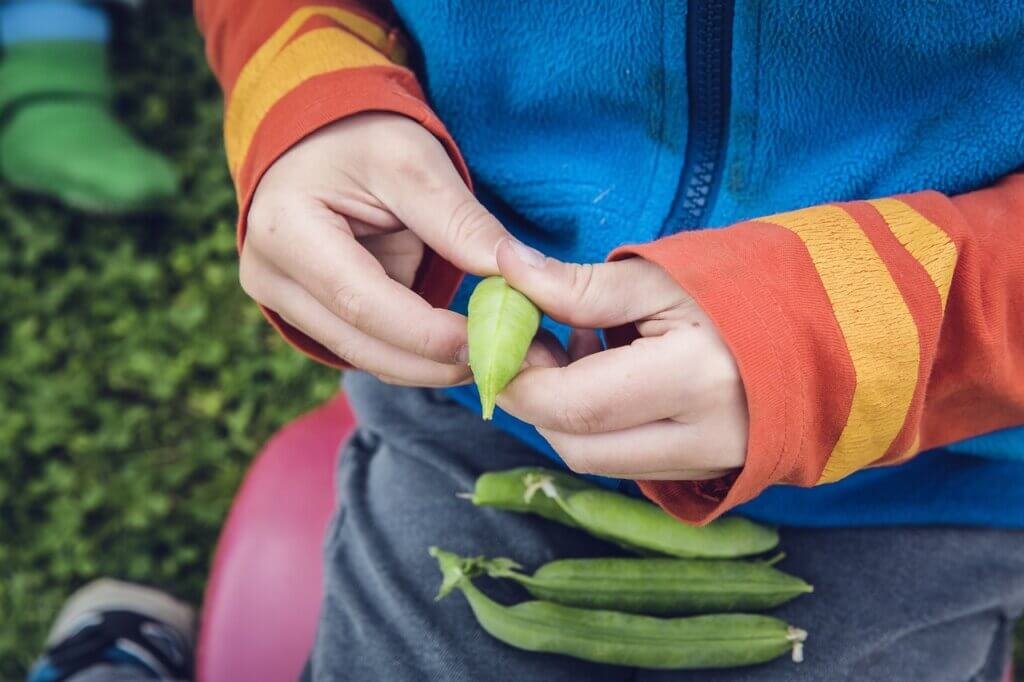
Utilizing Vertical Space
Hang pots or troughs on the balcony railing
One effective way to utilize vertical space in your balcony garden is by hanging pots or troughs on the balcony railing. Choose lightweight containers that can be easily secured to the railing with hooks or brackets. This technique not only adds visual interest to your balcony but also allows plants to cascade down and utilize vertical real estate that would otherwise go unused.
Install wall-mounted shelves or planters
Installing wall-mounted shelves or planters is a practical solution for maximizing vertical space. These can be attached to the balcony walls securely and provide additional surfaces for containers or plants. Consider the weight-bearing capacity of your walls and select brackets or fixtures that can support the weight of the shelves and plants. Wall-mounted shelves or planters can turn your bare walls into vibrant displays of greenery.
Use trellises or supports for climbing plants
Climbing plants are a great way to add vertical interest and maximize space in your balcony garden. Install trellises or supports to provide a climbing structure for plants like tomatoes, cucumbers, or morning glories. These structures can be freestanding or attached to the walls or railing. As the plants grow, guide them along the trellis or support, allowing them to reach their full potential while taking up minimal floor space.
Consider growing vines or creepers on the balcony walls
Growing vines or creepers on your balcony walls can create a lush and green backdrop, adding depth and visual appeal to your space. There are various climbing plants that perform well in containers and can be trained to grow on walls. Examples include ivy, jasmine, passionflower, or climbing roses. Ensure that the balcony walls are suitable for supporting such plants and provide trellises or wires for them to cling to as they grow.
Opt for hanging baskets or cascading plants
Hanging baskets are a versatile and space-saving option for your balcony garden. Choose plants with trailing or cascading growth habits, such as trailing petunias, nasturtiums, or cascading succulents. Hang the baskets at different heights to create a visually appealing display and make use of vertical space. Ensure that the hanging baskets are securely attached to prevent accidents or damage to your plants or balcony.
Caring for Edible Plants
Choose herbs and vegetables suitable for containers
Edible plants can provide a rewarding and sustainable addition to your balcony garden. Choose herbs and vegetables that are well-suited for container gardening. Herbs like basil, parsley, thyme, and mint are ideal choices as they have compact growth habits and are flavorful additions to your culinary pursuits. Vegetables like cherry tomatoes, salad greens, peppers, and dwarf varieties of beans or peas can also thrive in containers.
Provide adequate sunlight and water for edible plants
Edible plants require adequate sunlight and water to thrive and produce a bountiful harvest. Ensure that your balcony receives at least 6-8 hours of direct sunlight each day, as most vegetables and herbs require full sun. Water your edible plants regularly, allowing the top layer of soil to dry out slightly between waterings. Keep in mind that container-grown plants may require more frequent watering due to their limited root space.
Regularly harvest and prune to promote growth
To ensure continued growth and productivity, it is important to regularly harvest and prune your edible plants. Harvesting encourages new growth and prevents plants from becoming overcrowded. Pick ripe fruits and vegetables promptly, and regularly trim herbs to promote bushiness. Pruning also helps maintain the overall shape and health of your plants, ensuring that they continue to produce quality produce throughout the growing season.
Control pests and diseases organically
When growing edible plants, it is essential to control pests and diseases in a safe and organic manner to ensure the health and quality of your harvest. Regularly inspect your plants for signs of pests or diseases, such as holes in leaves or discolored spots. Use organic pest control methods such as introducing beneficial insects, applying neem oil or insecticidal soap, or using companion planting techniques to deter pests. Practicing good hygiene, such as removing fallen leaves or fruit, can also minimize the risk of disease.
Rotate crops to prevent nutrient depletion
To maintain the long-term health of your edible plants and prevent nutrient depletion, practice crop rotation in your balcony garden. Rotating crops means avoiding planting the same family of plants in the same container or area for consecutive growing seasons. This helps prevent the buildup of pests and diseases that may target specific plant families and allows the soil to replenish nutrients. Keep a record or make a planting plan to ensure proper crop rotation in your balcony garden.
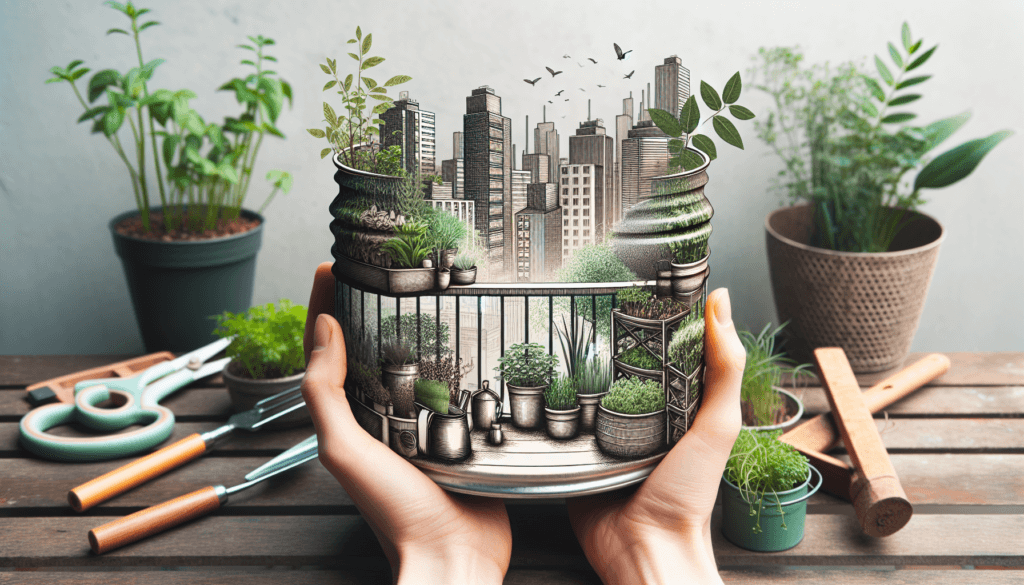
Creating a Pollinator-Friendly Balcony Garden
Choose nectar-rich flowers and plants
To attract and support pollinators like bees and butterflies, choose nectar-rich flowers and plants for your balcony garden. Look for species that have bright, vibrant colors and abundant flowers. Some popular choices include lavender, salvia, bee balm, zinnias, and sunflowers. Research specific plant varieties that are known to attract pollinators in your region to create a diverse and appealing landscape for these beneficial insects.
Include a variety of colors and shapes in your garden
Creating a pollinator-friendly balcony garden is not only about the type of plants but also about the diversity of colors and shapes. Pollinators are attracted to a range of colors, so include flowers in different hues, from yellows and oranges to pinks and purples. Additionally, incorporating various flower shapes, such as tubular, flat, or clustered, can attract different types of pollinators that have specific preferences.
Avoid the use of pesticides and herbicides
To truly create a sustainable and pollinator-friendly balcony garden, it is crucial to avoid the use of pesticides and herbicides. These chemicals can be harmful to beneficial insects and disrupt the delicate balance of your ecosystem. Instead, embrace natural pest control methods, such as companion planting, handpicking pests, or encouraging natural predators like ladybugs and praying mantises. Emphasize prevention and create a healthy garden environment that can naturally resist pests and diseases.
Provide a water source for pollinators
Pollinators require a water source, so make sure to include a shallow dish or birdbath with fresh water in your balcony garden. Fill the dish with smooth stones or pebbles to provide landing spots and prevent drowning. Place the water source close to your pollinator-attracting plants to make it easily accessible for bees and butterflies. Regularly change the water to avoid mosquito breeding and maintain its cleanliness.
Create shelter and nesting opportunities for bees and butterflies
In addition to nectar and water sources, pollinators also require shelter and nesting opportunities. Consider incorporating features like bee hotels or butterfly houses in your balcony garden. These structures provide nesting sites for these beneficial insects. Enhance the habitat by including plants with dense foliage or branching structures that offer shelter from wind and rain. Creating a welcoming environment for pollinators will not only beautify your balcony but also support biodiversity and ecological balance.
Reusing and Recyclable Gardening Materials
Repurpose old containers and materials
An essential aspect of sustainability is repurposing and reusing materials in your balcony garden. Instead of purchasing new containers, consider repurposing old buckets, bins, or crates that can serve as planters. Get creative with unconventional items like mason jars or tin cans, but be sure to provide proper drainage. Use discarded plastic bottles as self-watering systems or cut them to create planters for smaller herbs. Reusing these materials not only reduces waste but also adds a unique touch to your balcony garden.
Use biodegradable or compostable pots
If you prefer using commercially available pots, opt for biodegradable or compostable options. These pots are typically made from materials like coconut coir, rice husks, or molded plant fibers. They can be planted directly into the soil, eliminating the need for plastic or synthetic container disposal. As the pots break down naturally, they contribute organic matter to the soil and reduce environmental impact.
Collect and reuse rainwater for watering
Water conservation is an integral part of sustainable gardening, and one way to achieve this is by collecting and reusing rainwater. Set up a rainwater collection system on your balcony by placing barrels or containers to catch rainwater runoff from the roof or a nearby gutter. Use this collected rainwater to water your plants instead of relying solely on tap water. Rainwater is naturally free of chemicals like chlorine, making it beneficial for your plants.
Use compost from kitchen scraps as fertilizer
Instead of buying fertilizers, utilize compost from kitchen scraps as a nutrient-rich, organic fertilizer for your balcony garden. Collect fruit and vegetable scraps, coffee grounds, and eggshells in a compost bin or vermicomposting system. As these materials decompose, they transform into nutrient-rich compost that you can mix into your soil or use as a top dressing for your plants. Composting not only reduces kitchen waste but also supports a healthy and sustainable garden.
Recycle plant waste for mulch or compost
When tending to your balcony garden, recycle plant waste by turning it into mulch or compost. Fallen leaves, pruned branches, or spent flowers can be collected and recycled. Shred or chop larger plant waste into smaller pieces that decompose faster. Use this plant waste as mulch to suppress weeds, retain moisture, and add organic matter to the soil. Alternatively, add it to your compost bin to create nutrient-rich compost that can be used throughout your garden.
In conclusion, creating a sustainable balcony garden requires careful consideration of various aspects, from plant selection to watering techniques and material choices. By choosing the right plants, designing an efficient layout, providing proper care and maintenance, utilizing vertical space, and embracing eco-friendly practices, you can transform your balcony into a thriving and environmentally-conscious garden. Embrace the opportunity to connect with nature and enjoy the beauty and productivity that a sustainable balcony garden can provide. Happy gardening!
